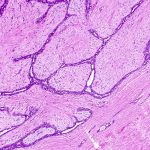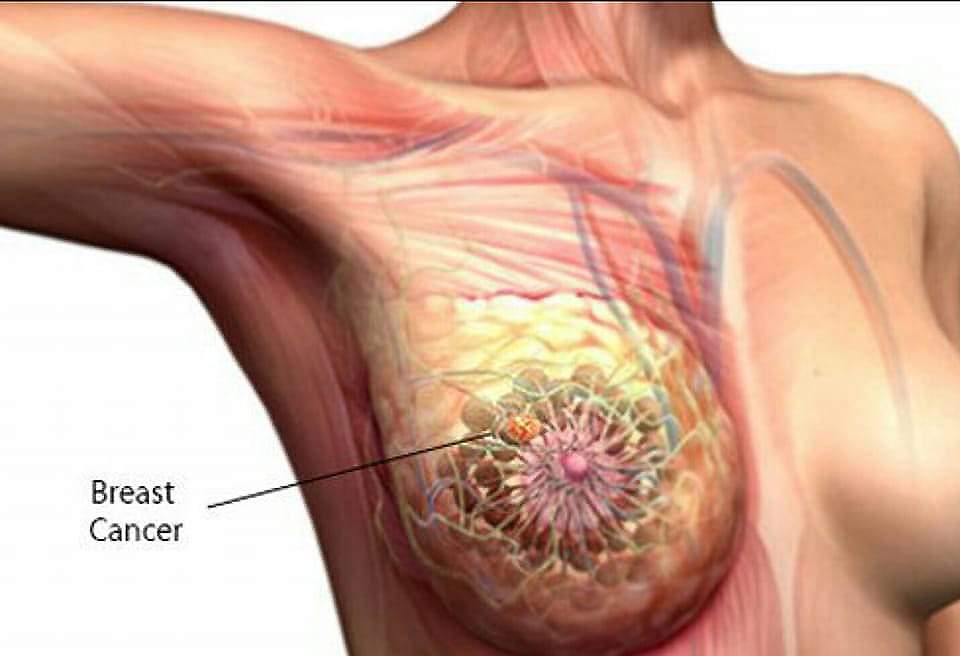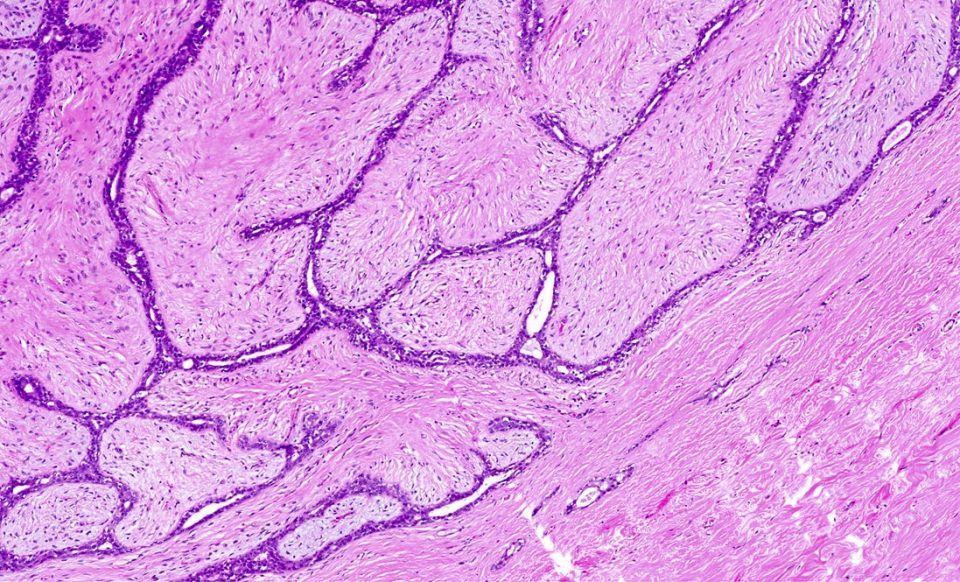
Breast fibroadenoma from diagnosis to treatment
June 28, 2025Breast cancer is one of the most common cancers among women worldwide caused by unchecked cell proliferation in the breast tissue. Information regarding the diagnosis process, disease staging, and the treatment options available is crucial in their successful management and patient care. This article provides a comprehensive overview of the diagnosis process and treatment of breast cancer.
Breast cancer diagnosis
It is the first critical phase in treatment that necessitates early and accurate diagnosis of breast cancer. The diagnostic methods are:
Clinical examinations
Physician breast examination: The doctor examines the breasts as well as the axillary lymph nodes for lumps or abnormalities.
Magnification mammography: A more specialized type of mammography, performed in the face of symptoms (such as a lump or nipple discharge) or abnormality on screening mammography. More clear images of the suspicious area are taken.
Imaging methods
Breast Ultrasound: Using sound waves, it illustrates the structures in the breast and helps differentiate between solid masses and fluid-filled cysts.
Breast Magnetic Resonance Imaging (MRI): It uses a magnetic field and radio waves to create detailed images. It is usually used in combination with mammography for high-risk individuals as a follow-up, to quantify the volume of the disease, or to check implants.
PET scan (Positron Emission Tomography – PET Scan) / CT scan (Computed Tomology – CT Scan): They are usually used to determine the stage after the initial diagnosis of cancer and to check for the likely spread (metastasis) to other parts of the body such as bones, lungs, or liver.
Biopsy: The only absolute test for the diagnosis of breast cancer and the determination of tumor characteristics.
• Core Needle Biopsy: Optimal option. Through a hollow needle, small cylindrical tissue samples are removed.
• Surgical (Excisional) Biopsy: Removal of the entire mass or suspicious growth. Usually performed if other procedures are inconclusive.
• Sentinel Lymph Node Biopsy: At the time of removal of the primary tumor, the sentinel lymph node(s) (the very initial nodes to be affected by the spread of cancer) are identified and removed to examine if any cancer cells are found. If the cancer cells are found in these nodes, investigation of the axillary lymph nodes ensues.

Staging of breast cancer
Following the diagnosis of cancer, staging is done to identify the spread of the disease and plan the treatment. The TNM system is the usual one:
• T (Tumor): the extent of the primary tumor in the breast and its direct extension.
• N (Lymph Nodes – Nodes): involvement and number of armpit or nearby lymph nodes.
• M (Metastasis – Metastasis): Absent or present dissemination to a secondary organ (bone, lung, liver, brain, etc.).
Breast cancer treatment
Treatment of breast cancer is multi-faceted and is decided based on various criteria: cancer stage, type, receptor status (ER/PR/HER2), gene mutation status, patient age, general health status, and patient choices.
Surgery forms a part of treatment in most cases of early breast cancer.
• Lumpectomy / Breast-conserving surgery: The tumor with a narrow rim of normal tissue around it is removed. For the majority of patients, radiation treatment is administered later to destroy any cancer cells left behind in the breast.
• Mastectomy: Removal of all the breast tissue.
Which has several forms:
Simple Mastectomy: Excision of breast tissue.
Modified Radical Mastectomy: Cutting out breast tissue along with the lymph nodes in the axilla.
Bilateral Prophylactic Mastectomy: Removal of both breasts in women who have a very high risk of getting breast cancer.
It appears as though you typed a bullet point symbol (§). Could you provide some additional context or text that you would like me to translate?
• Removal of lymph nodes
Sentinel Node Biopsy: Excision of the first few nodes.
Axillary Lymph Node Dissection: Excision of more axillary lymph nodes (when cancer cells are detected in the sentinel node or when there is obvious involvement).
- Breast Reconstruction: Surgery to rebuild the breast shape following a mastectomy and can be done at the same time as the mastectomy or afterwards. Implants or the patient’s tissue is used.

Radiation therapy
The use of high-energy rays (like X-rays or protons) to destroy cancer cells.
Often done after lumpectomy to lower the risk of local recurrence.
It can be recommended after mastectomy in some cases (e.g., large tumor, involvement of lymph nodes, or positive margin of surgery).
O It is used to treat metastases (especially in the bone or brain) to reduce pain or control growth.
Systemic treatments:
Treatments that spread throughout the entire body and target cancer cells.
Chemotherapy: the use of drugs to kill fast-growing cells, including cancer cells.
Hormone therapy: in hormone receptor-positive tumors (ER+ and/or PR+). These treatments inhibit or reduce the growth of hormone-dependent cancer cells (estrogen and progesterone).
Targeted therapy: Drugs that specifically bind to specific molecules in cancer cells or their environment that are essential to tumor growth and survival.
O Immunotherapy: Stimulating the patient’s immune system to identify and kill cancer cells.
Follow-up and monitoring after treatment of breast cancer
After completion of the initial treatment, follow-up on a regular basis is necessary to monitor recurrence of cancer as well as control long-term side effects.
Physical check-up by a doctor (usually every 3 to 6 months for the first couple of years, then with progressively longer intervals).
Once-a-year Mammogram for the other breast (following lumpectomy) or the remaining breast (following mastectomy).
Other imaging tests (MRI, ultrasonography) may be requested according to individual risk and cancer type.
Screening for other forms of cancer (e.g., colonoscopy, Pap smear) according to general guidelines.
Conclusion
Breast cancer is a heterogeneous disease with several subtypes and treatment strategies. Accurate diagnosis by clinical evaluation, high-resolution imaging, and biopsy, and staging of the disease and tumor biology (receptor status, mutation) form the basis for personalized treatment planning. Treatment modalities are surgery, radiotherapy, chemotherapy, hormone therapy, target therapy, and immunotherapy, singly or in combination, to cure early-stage or control the disease and maintain quality of life in advanced-stage disease. Active side effect control and access to extensive supportive care (nutrition, exercise, and psychosocial support) are essential in the patient’s course of treatment. Frequent and long-term follow-up after treatment is necessary to monitor recurrence and overall health. Ongoing research in breast cancer leads to ongoing improvement in outcome and quality of life in patients.


